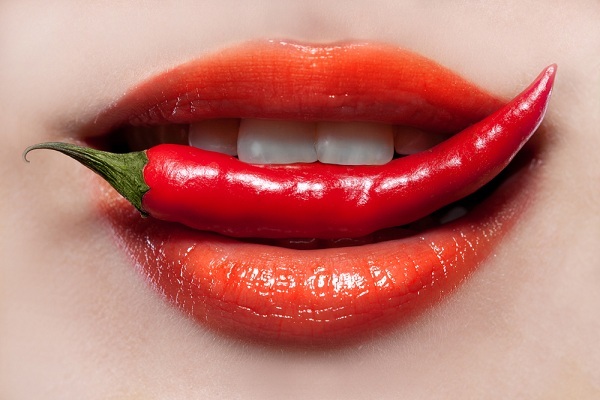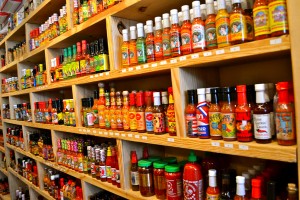Sunday August 2, 2015 — (Gephardt Daily) — Hot or spicy has become the new flavor of choice in the United States.
I was in New Orleans last week on assignment with Gephardt Daily, and wanted to visit an old friend, who literally operates one of the city’s “Hot Spots.”
“Miss Nola,” the queen of everything hot and spicy in New Orleans. She will tell you hot sauces run in her veins. The energetic proprietor of “The Pepper Place” (with 2 locations in New Orleans) loves to show off what some say is the largest selection of hot sauces in the city. She also loves to teach each and every one of her walk-in clients all about the benefits of using her sauces.
“I love to explain the reasons our sauces are better and keep winning awards is we do it all here. It’s all made with the freshest ingredients, no preservatives and no enhancers, ” Nola said. “The minute you begin adding unnatural ingredients, you begin to take away the natural flavors and benefits of the sauces.”
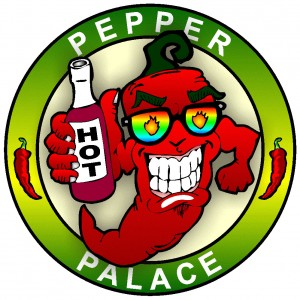
Her stores get an average of about 1000 people per day walking in, “Sometimes double or triple that when we’re busy” Queen Nola jokes.
“This is either the first stop for people coming to New Orleans, or the last stop for them going out of town and wanting to take some of the city’s flavor with them.”
America is simply in love with hot sauce. Sit down at your local restaurant and you’ll see a bottle of hot sauce right next to the salt and pepper.
It’s no wonder why America’s dedication to spicy foods has skyrocketed in the last 10 or 15 years.
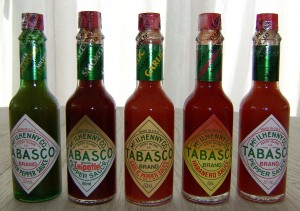
The McIlhenny Company in Louisiana (makers of Tabasco Hot Sauce), says production has increased and strengthened even through the economic crisis. Their hot sauce production increased annually at about 4% in the past five years.
The fiery liquid has not only taken its place with the other condiments at the average American dining table, it has also become one of the most used ingredients in American cooking.
Once reserved chiefly for spicing up your homemade chili and tacos, hot sauces are now adding their flavors to steaks, chicken, pizza and even popcorn.
Benefits of Hot Sauces
And it’s good for you… just don’t over do it.
According to Livestrong.com, “There are thousands of types of hot peppers, and they tend to offer similar nutritional benefits. Take green chile peppers. One serving (half a cup) is low in calories, sugars and carbohydrates. It also contains little fat and no cholesterol. Nutrients include a whopping dose of Vitamin C.
Vitamin C is connected to fast metabolism, the development of connective tissue, biosynthesis of neurotransmitters, immune function, healing wounds and iron absorption. It’s also an antioxidant, which means it destroys free radicals that can enter and damage cells. Vitamin C is necessary for healthy skin, teeth and bones and even helps stave off scurvy.
Nutritionally, the hot chile pepper does not relent.
Hot chile peppers contain carotenoids (Vitamin A), flavonoids, antioxidants, vitamins and minerals, all of which confer health benefits, including anti-aging and anti-inflammatory properties, DNA protection and lower blood pressure.
The real wonder of chile peppers, though, is capsaicin, a colorless plant compound that gives hot peppers their heat and can be used for its analgesic properties: Yes, capsaicin is so powerful that it’s often used in pain-relieving topical creams.
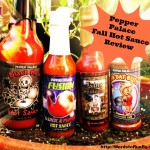 |
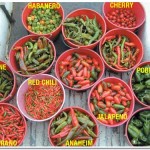 |
Capsaicin is present in servings of hot peppers, hot sauces and salsas. Inside hot peppers, capsaicin is concentrated in the placental tissue that holds the seeds, as well as in pod walls. Contrary to popular belief, it’s not the seeds that bring the heat, although seeds can be hot. The heat found in seeds is absorbed from the placental tissues.
How hot is capsaicin? The Scoville Scale is the standardized measure of pepper hotness.
Traditional red Tabasco sauce represents 2,500 to 5,000 Scoville heat units.
For pure capsaicin, the tally is 16 million Scoville heat units. The lesson: don’t put pure capsaicin in your soup for the health benefits, or else a rogue government may kidnap you and weaponize your face.
Hot sauce and hot peppers can make your mouth really, really hot, and that can be uncomfortable. That same stuff found inside hot peppers is what police fire into crowds. Hence the name “pepper spray.” It rolls off the tongue nicer than “Capsaicin-Based Unruly Citizen Neutralizer.”
Foods containing capsaicin can decrease the ability to taste other flavors. This is great news if you’re an awful cook, but it’s not ideal if you’re eating at a restaurant where the chefs have cool foreign accents.
As for upset stomachs, there’s no proof that hot peppers upset the stomach any more than other foods.
The biggest danger to most people who eat hot peppers or hot sauce is getting capsaicin on their skin and rubbing it in their eyes, which your author can confirm is the worst feeling in the universe.
A Little “Hot” History
If you love hot sauce, blame the South! It was the Southern States that first introduced the idea of using various peppers to add a little ‘heat’ to certain foods. But then, as immigrants from all over began cooking their native foods, hot sauces became more and more prevalent in US kitchens.
It’s a fact that all types of Chili peppers have existed for over 6000 years in Mexico, Central and South America.

Explorer Christopher Columbus observed pepper sauces used to preserve meats and enhance flavors.
The first bottled cayenne sauces appeared in 1807 in Massachusetts, and the oldest surviving commercial hot sauce is Tabasco.
According to McIlhenny’s, New Orleans boasts the first recorded crop of Tabasco chiles in 1849 on a plantation owned by Colonel Maunsell White, who advertised a hot sauce using the chiles in 1859.
He then gave the recipe and seeds to his friend, Edmund McIlhenny, who began planting on Avery Island.
Production was halted only once due to the Civil War where McIlhenny Company relocated to San Antonio, Texas for the duration of the war.
But in 1868, the Avery Island Operation picked up again with the sauce selling for a dollar per bottle. The sauce was patented in 1870.
Other hot sauces began springing up, including Louisiana’s ‘Crystal Hot Sauce’ in 1923 and most recently, ‘The Pepper Palace’ sauces in 1990.
In 2015, projections for sales of hot sauces in the USA is about 2 billion dollars annually just in America.

